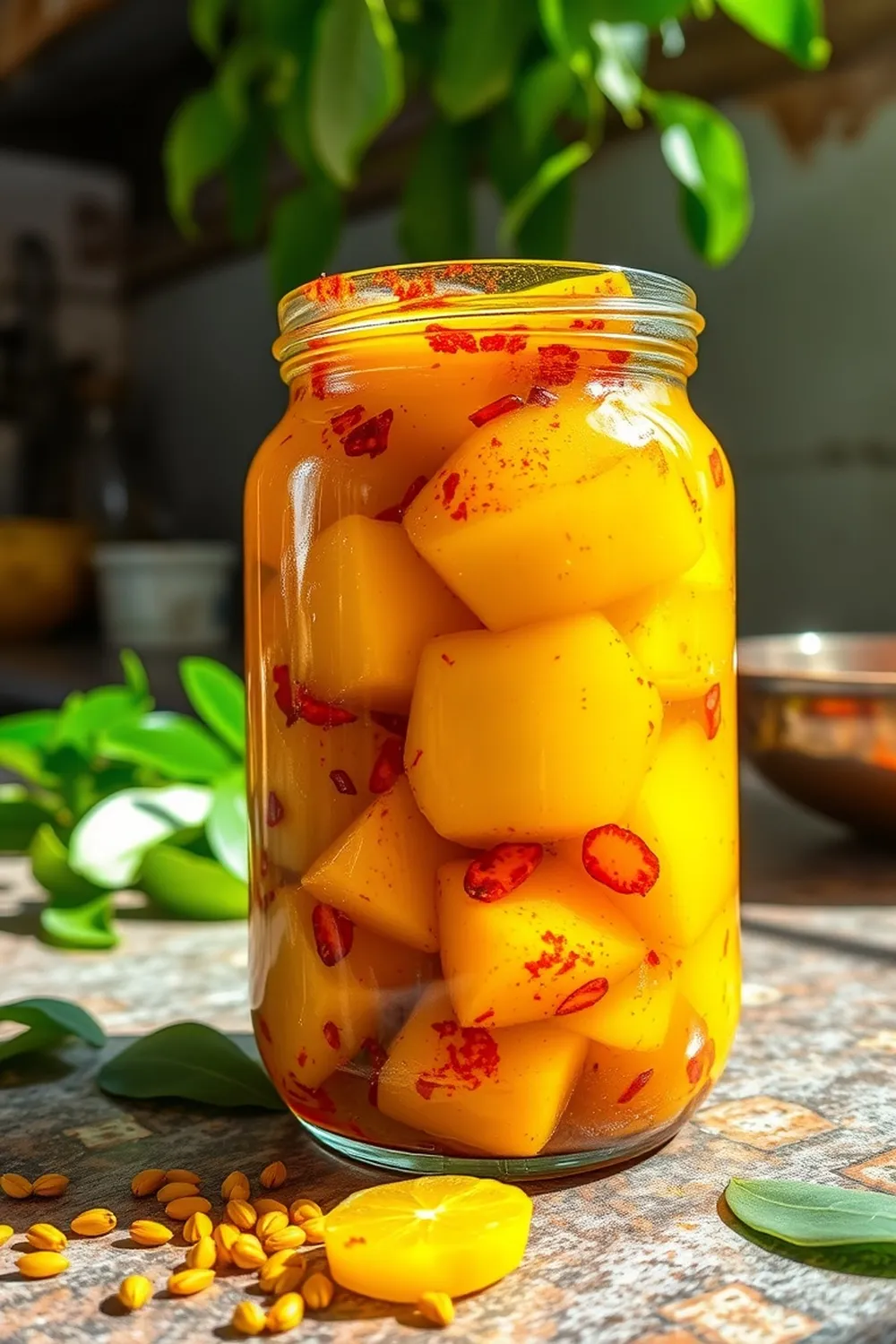- Soak tamarind in water for 15 minutes. Extract the pulp and set aside.
- Slit green chilies vertically and chop sambar onions finely.
- Heat oil in a pan. Temper mustard seeds, urad dal, and curry leaves.
- Add chopped onions and green chilies. Sauté until onions turn translucent.
- Pour tamarind extract into the pan. Add salt and hing. Mix well.
- Simmer on low heat until the mixture thickens to a chutney-like consistency.
- Cool and store in an airtight container. Serve with dal rice or pongal.
- Calories:150 kcal25%
- Energy:627 kJ22%
- Protein:2 g28%
- Carbohydrates:18 mg40%
- Sugar:5 mg8%
- Salt:300 g25%
- Fat:8 g20%
Last Updated on 2 months by Neha Deshmukh
Authentic Tamarind Chutney Recipe – Sambar Onion & Hing
Introduction
There’s just something magical about a good chutney, isn’t there? It instantly elevates a simple meal. This tamarind chutney is one of those recipes I keep coming back to – it’s tangy, a little spicy, and utterly addictive. I first made this when I was trying to recreate the flavors of my grandmother’s kitchen, and honestly, it’s been a family favorite ever since! It’s perfect with a comforting plate of dal rice, or a warm serving of pongal. Let’s get cooking!
Why You’ll Love This Recipe
This tamarind chutney isn’t just delicious, it’s also surprisingly easy to make. It comes together in under 30 minutes, and requires minimal ingredients. The combination of tangy tamarind, sharp sambar onions, and the unique aroma of hing (asafoetida) is simply irresistible. Plus, it’s naturally vegan and gluten-free!
Ingredients
Here’s what you’ll need to make this flavorful chutney:
- 1 tamarind (big gooseberry size) – about 50-60g
- 3-4 green chillies
- 10 sambar onions
- 2 pinches hing/asafoetida (about 1/4 tsp)
- 1/2 tsp mustard seeds
- 1/2 tsp urad dal (split black lentils)
- A few curry leaves (about 10-12)
- Salt to taste
- Water as needed (about 1 cup)
Ingredient Notes
Let’s talk ingredients! Getting these right makes all the difference.
- Sambar Onions: These small, shallot-like onions have a really unique, slightly pungent flavor that’s key to this chutney. They’re a bit sharper than regular shallots. If you absolutely can’t find them, you can substitute with 2-3 regular shallots, but the flavor won’t be quite the same.
- Hing/Asafoetida: Don’t skip this! It adds a wonderful savory depth. It has a strong smell in its raw form, but mellows out beautifully when cooked. You can find it at most Indian grocery stores, or online.
- Tamarind: I prefer using a good quality, sour tamarind for this recipe. You can use tamarind paste if you prefer, about 2-3 tablespoons, but I find the flavor from the pod is much richer.
Step-By-Step Instructions
Alright, let’s make some chutney!
- First, soak the tamarind in about a cup of warm water for 15 minutes. This helps soften it and makes it easier to extract the pulp.
- While the tamarind is soaking, slit the green chillies vertically. Finely chop the sambar onions – you want them to be quite small.
- Now, heat about 1-2 tablespoons of oil in a pan over medium heat. Add the mustard seeds. Once they start to splutter, add the urad dal and curry leaves. Let them sizzle for a few seconds.
- Add the chopped sambar onions and green chillies to the pan. Sauté until the onions turn translucent, about 5-7 minutes.
- Once the tamarind is softened, squeeze out the pulp into the pan, discarding the seeds and fibers. Add salt and hing. Mix everything well.
- Simmer the mixture on low heat for about 10-15 minutes, stirring occasionally, until it thickens to a chutney-like consistency. It should coat the back of a spoon nicely.
- Let the chutney cool completely before storing it in an airtight container.
Expert Tips
- Don’t overcrowd the pan when sautéing the onions. Cook them in batches if necessary to ensure they brown evenly.
- Adjust the amount of green chillies to your spice preference.
- Keep stirring while simmering to prevent the chutney from sticking to the bottom of the pan.
Variations
- Spice Level Adjustment: For a milder chutney, remove the seeds from the green chillies. For extra heat, add a pinch of red chilli powder.
- Regional Variations: In Tamil Nadu, they sometimes add a small piece of jaggery to balance the tartness. In Karnataka, you might find a version with roasted cumin seeds.
- Storage Life Extension: Adding a teaspoon of oil on top of the chutney when storing can help extend its shelf life. My aunt swears by this trick!
Serving Suggestions
This chutney is incredibly versatile! Here are a few of my favorite ways to enjoy it:
- With dal rice – a classic combination!
- Alongside pongal (a South Indian rice and lentil dish).
- As a dipping sauce for idli or dosa.
- Spread on sandwiches or wraps for a tangy kick.
Storage Instructions
Store the cooled chutney in an airtight container in the refrigerator. It will stay fresh for up to a week.
FAQs
- What is Sambar Onion and can I substitute it? Sambar onions are small, shallot-like onions with a unique flavor. You can substitute with regular shallots, but the taste won’t be exactly the same.
- How do I know when the chutney has reached the right consistency? The chutney should be thick enough to coat the back of a spoon. It will also thicken further as it cools.
- Can I make this chutney ahead of time and freeze it? Yes, you can! Freeze in small portions for easy use.
- What is Hing/Asafoetida and where can I find it? Hing is a resin with a pungent smell that adds a savory depth to Indian dishes. You can find it at Indian grocery stores or online.
- Is this chutney naturally gluten-free and vegan? Yes, absolutely! This recipe uses all naturally gluten-free and vegan ingredients.










